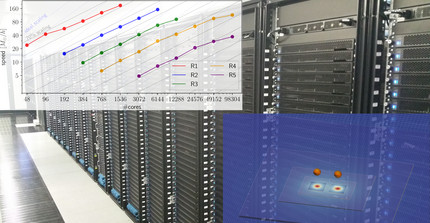Numerical Relativity
The recent observation of gravitational waves and electromagnetic signals from a binary neutron star merger marks a breakthrough in the field of multi-messenger astronomy. To relate the observational data to the source properties, one requires accurate theoretical models of the last stages of the binary coalescence. Because of the complexity of the equations governing general relativity and relativistic fluids, this can only be done with advanced numerical relativity simulations. These 3+1-dimensional simulations deal with all nonlinearities of Einstein's Equations and can be used to describe accurately the last stages of the binary coalescence. They predict the emitted gravitational wave signal and are essential to understand the central engines and the origin of electromagnetic counterparts.
Unfortunately, because of the high computational costs of numerical relativity simulations, and due to the fact that the binary neutron star coalescence is detectable for several thousand gravitational wave cycles, it is impossible to directly relate the measured data to simulations. In general, numerical relativity simulations cover only the last few orbits before the collision of the two stars. However, at these times gravitational forces are strongest and most of the interesting phenomena happen. This makes numerical relativity an essential tool to characterize the imprint of the intrinsic binary parameters (masses, spins, eccentricity, and equation of state) on the dynamics and to derive and validate gravitational wave approximants in the strong-field regime, as well as to forecast the final remnant's properties and the amount of material ejected during the merger process that triggers electromagnetic counterparts.

